The pignolata, a typical dessert of the Messina Carnival
There glazed pignolata is a sweet from Messina origins that was traditionally consumed during the Carnival period. Nowadays, however, it is possible to find it at any time of the year and the reason is simple: pignolata is really too good to limit it to a few days a year! Small fried dumplings, scented with lemon peel, soft and tasty, mixed with two delicious glazes, one with icing sugar, egg whites and lemon juice, the other with dark chocolate and butter. The balance of flavours, between sweet and bitter, leads this recipe to be one of the most popular and also replicated during the Christmas holidays. The preparation of the pignolata is similar to that of other recipes from Southern Italy, such as the Neapolitan struffoli or the cicerchiata from the Marches. Preparing it is quick and easy: you just have to be patient and let the dough rest two hours before frying the dough dumplings but, above all, you’ll have to manage not to eat them all before dressing them with the glaze!
Ingredients for 4 people
- Flour 00: 500 g
- Whole eggs: 2
- Yolks: 2
- Egg whites: 40ml
- Granulated sugar: 50 g
- Butter at room temperature: 60 g
- Grappa: 80 ml
- Salt: 1 pinch
- Sunflower seed oil: 1 l
- Icing sugar: 220 g
- Lemon juice: 150 g
- Dark chocolate: 250 g
- Preparation: 30 minutes
- Total: 50 minutes
- Calories: 612 kcal/portion
Preparation
Sift the flour to avoid the formation of any lumps and pour it into a bowl. Divide the butter into cubes and add it to the flour together with a pinch of salt.

Add the granulated sugar. Thoroughly wash an untreated lemon, dry it with a clean tea towel and grate the peel to add it to the rest of the ingredients.

Pour in the grappa, the two whole eggs and the two yolks. Set aside the egg whites that you will need for another phase of the recipe.
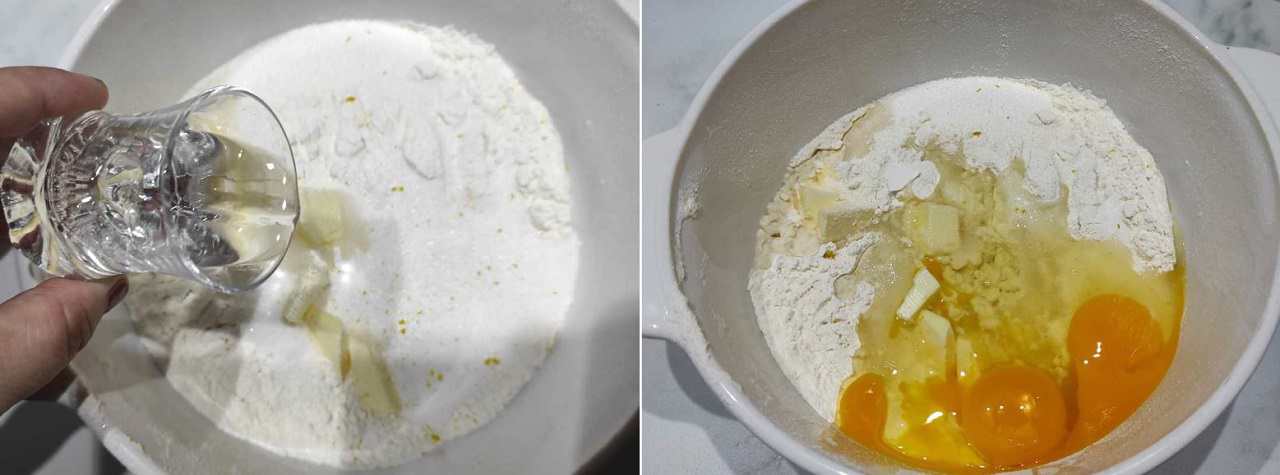
Start mixing all the ingredients with a spatula, then continue to knead by hand to obtain a sandy mixture.

Pour everything onto a pastry board or a floured work surface. Continue to knead vigorously until you obtain a compact and elastic dough, which you can shape into a loaf.

Wrap it in plastic wrap and let it rest in the refrigerator for at least 2 hours. After the necessary time, cut into pieces about 1 cm wide. Roll the pieces with your hands to get loaves.

With the help of a tarocco or a knife, slice the loaves to obtain small dumplings of about 1 cm.

Pour the seed oil into a pan and turn the stove on to medium heat. Let the oil reach a temperature of 170°C and dip a few pieces of dough at a time.
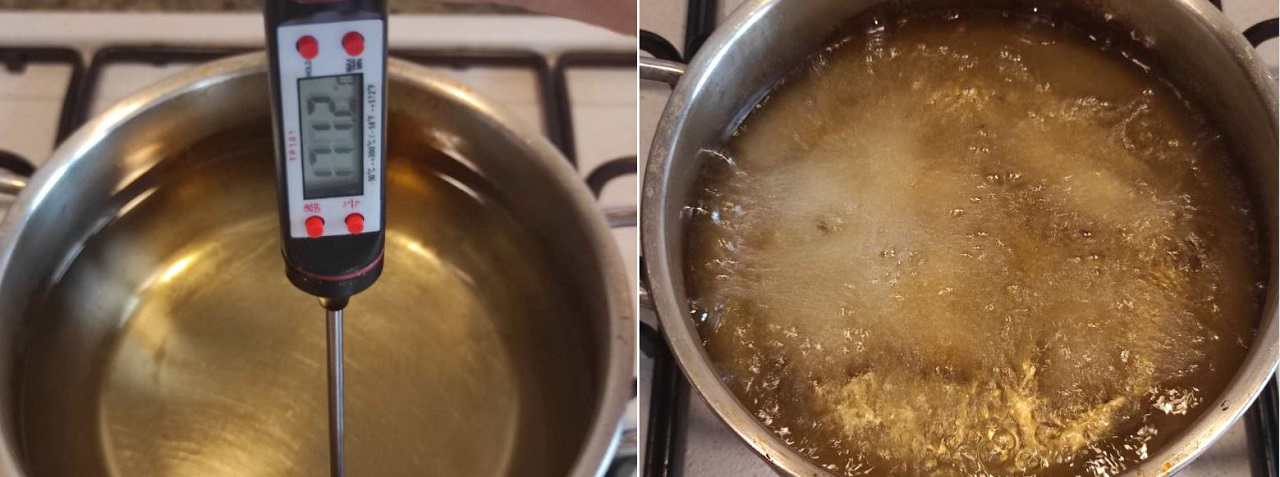
Fry for about 3-4 minutes, until golden brown, then drain carefully.
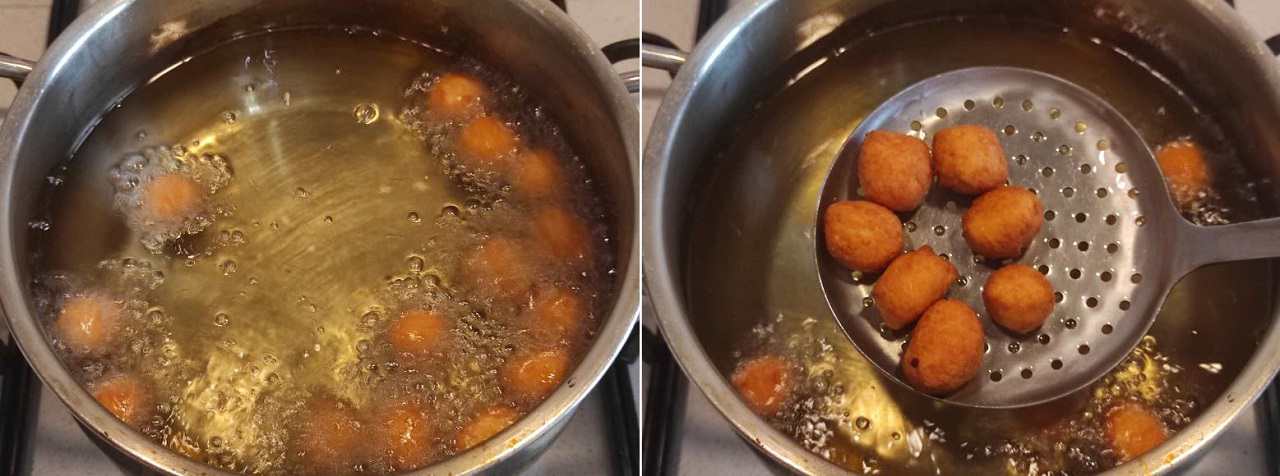
Let them sit on a paper towel-lined tray to dry off any excess oil. As soon as they are dry and warm, divide them into two bowls.
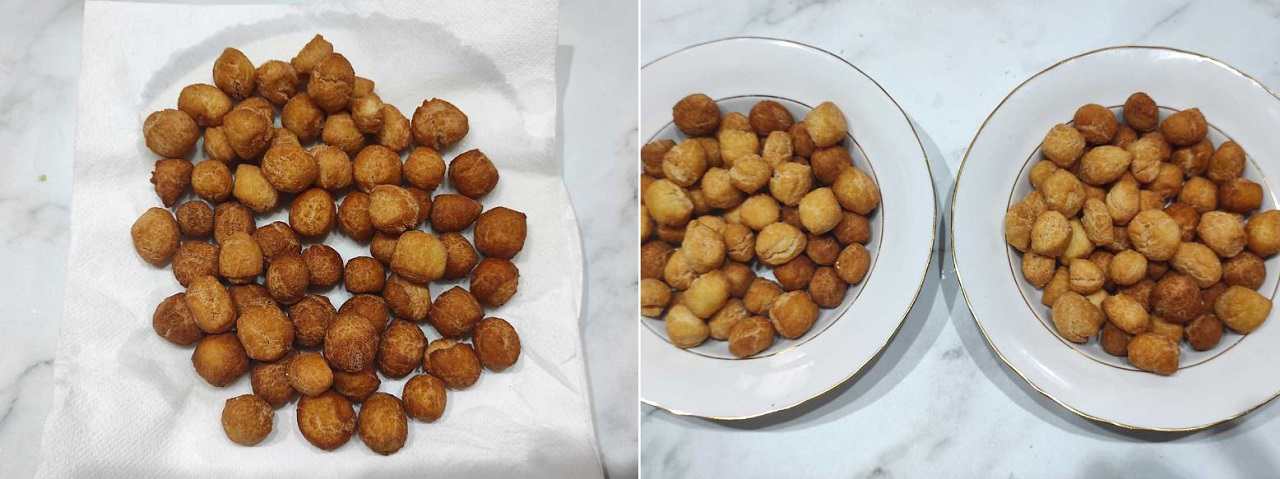
PREPARATION OF THE ICING
Prepare the lemon glaze by pouring the 40 ml of egg white into a bowl. With an electric whisk, whip them on high speed.
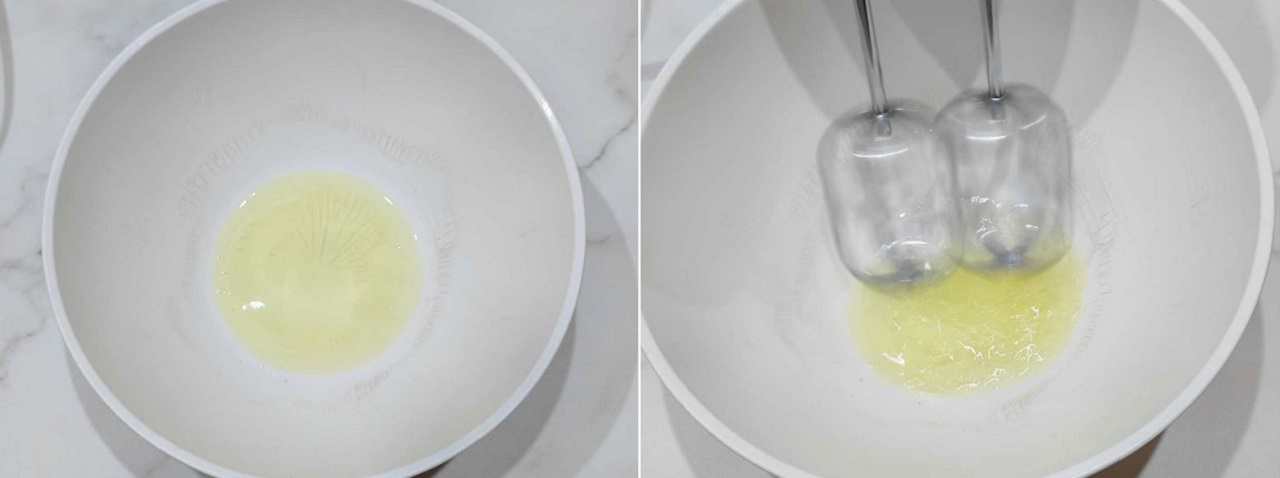
While the egg whites are whipping, add the icing sugar by the spoonful, a little at a time. Continue beating at maximum speed until the mixture is thick and shiny. Slowly pour the lemon juice continuing to incorporate everything, then turn off the electric whips.

Pour half of the fried dumplings into the bowl of lemon glaze, mixing well. Then place them on half a serving plate.

Cut the chocolate into coarse pieces and pour into a bowl suitable for cooking in a bain-marie. Put a saucepan with water on a moderate heat and place the bowl on top.

As soon as the chocolate has started to melt, add the butter, stirring constantly with a spatula. The chocolate should melt completely.
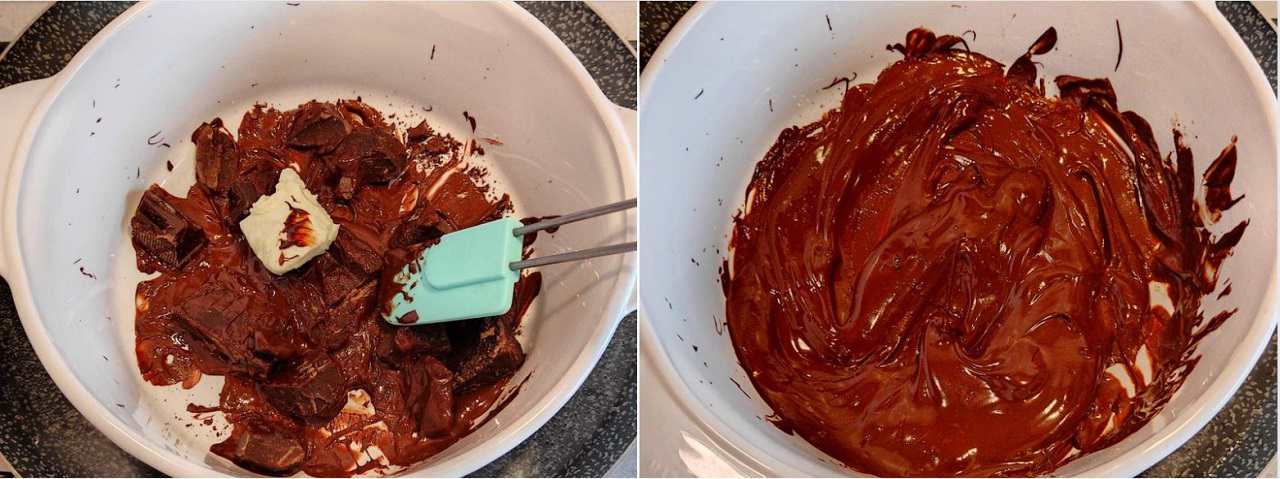
Pour the other half of the fried dumplings into the melted chocolate and mix. Pour your chocolate pignolata onto the other half of the serving dish.

Advice and tips
If you have a cooking thermometer it will be easier for you to monitor the temperature of the oil. You can find it for sale in supermarkets and online. Alternatively you can try a dip a long toothpick into the hot oil: if bubbles appear, the oil is at the right temperature and you can start frying your pignolata.
You can replace the grappa with the same dose of orange liqueur, orange juice or plain still water.
You can prepare the dough the night beforekeep it in the fridge overnight and then fry the pignolata the next day.
To make your pignolata even more suitable for the Carnival atmosphere, you can add some sugar tails of different colors.
Pignolata can also be eaten simply covered with wildflower honey and sugar tails. In that case you can keep it for 5 days, under a glass bell.
storage
The glazed pignolata can be kept outside the refrigerator, under a glass bell, for 3 days maximum.
Alternatively you can prepare the pignolata without icing e keep it covered for 4 days, then glaze it and serve it if necessary. We do not recommend freezing the pignolata.
History
Pignolata was born as Carnival cake made with very poor ingredients: flour, eggs and lard. Originally from Messina, it then spreads to the neighboring towns of Sicily and to nearby Reggio Calabria. The name “fussy” is inspired by the shape of these fried sweets, which once cooked and glazed (or covered with honey) resembled the shape of pine cones. Nowadays pignolata is prepared and can be found all year round, but it is consumed above all at Carnival as per tradition. In Messina it is more common variant with lemon and chocolate glazewhile in Calabria the version with honey is preferred.
Ingredients for 4 people
- Flour 00: 500 g
- Whole eggs: 2
- Yolks: 2
- Egg whites: 40ml
- Granulated sugar: 50 g
- Butter at room temperature: 60 g
- Grappa: 80 ml
- Salt: 1 pinch
- Sunflower seed oil: 1 l
- Icing sugar: 220 g
- Lemon juice: 150 g
- Dark chocolate: 250 g
- Preparation: 30 minutes
- Total: 50 minutes
- Calories: 612 kcal/portion

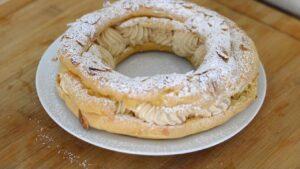
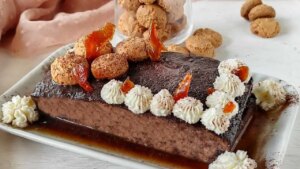


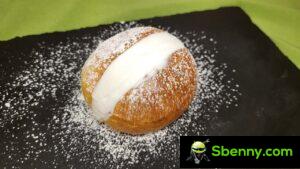

Start a new Thread